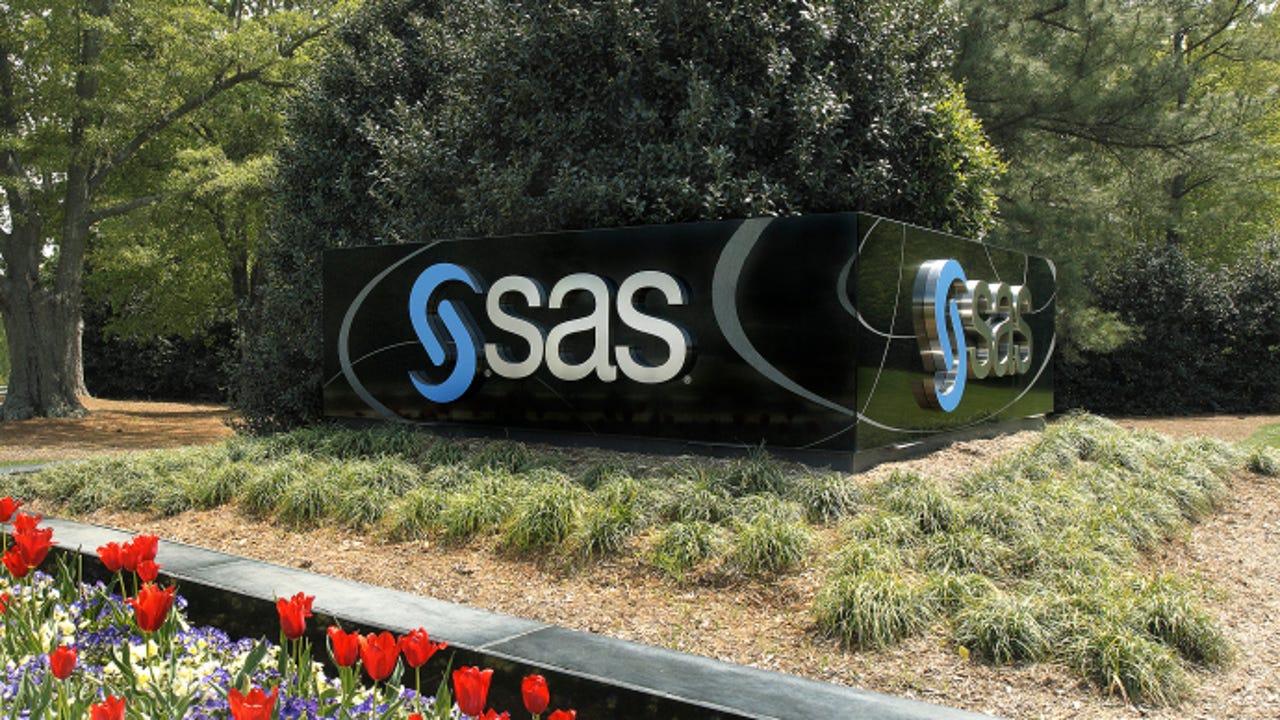SAS charts its own road to AI and the cloud


SAS Institute Inc.
As technology is an industry that eats its young, it's rare to come across providers that have been around for more than a human generation. Among the household names today, IBM and SAS are the only ones spanning back over 40 years, with the difference that SAS has been continually growing and, after its early years, profitable. So the company, still under the leadership of founder Dr. Jim Goodnight, continues to forge its own path.
Dr. Goodnight opened up last week's SAS analyst gathering with a demonstration using Alexa as the front end for SAS analytics. "Alexa, show me last year's sales by region," with Alexa providing plain English descriptions of the regional histograms of results that popped up on the screen. There's a bit of irony or coincidence here: SAS was founded just after the initial run of Star Trek, and 40 years later, the CEO gives a Star Trek-like demo of his products.
SAS has charted its own course over the years, and in a way, history has come full circle in its direction. As a company that eschewed perpetual licenses, you could say that SAS invented to annual software subscription 40 years ago. And there's a historical path from yesterday's time-share to today's multi-tenant cloud computing.
But even there, SAS's cloud strategy skews its own path because of the compute-intensive nature of its analytics. Multi-tenancy, the predominant mode of deployment in the public cloud, hits the wall when dealing with HPC-like, compute-intensive nature of SAS analytics. Multi-tenancy is about sharing compute, which is the last thing you want to do when your regression model is compute-bound.
That's why SAS is one of the few not hopping the Spark bandwagon, instead positioning its own CAS (Cloud Analytic Services), and why SAS tends to promote bare metal implementations for its cloud. The same goes for Docker, which SAS at this point relegates to web client apps rather than for the heavy lift of analytics.
Admittedly, it's hard to listen to an analytics provider without hearing about machine learning and AI. But while the rest of the world is bathing in AI hype, SAS customers view it as evolution, not revolution. At a customer panel, only one of the participants indicated immediate need for such capabilities.
SAS is also talking cognitive computing, but unlike IBM, it is more measured, for now positioning cognitive primarily for Alexa-like natural language interfaces as opposed to performing deep reasoning. SAS will have more ambitious plans for cognitive in the longer run. SAS views machine learning as working in an assistant role, such as helping users with auto-tuning their models, or providing some intelligent clustering capability as part of a complex regression model.
It's a year of building for SAS. Last year it introduced Viya, a new cloud-native, in-memory analytics platform that rethinks the SAS architecture and refactors its applications. It will run in the public or private cloud on "bare metal" Linux servers. Viya converges a number of pieces that formerly required separate tools for data access, data preparation, exploration, and model development and deployment. And it breaks the wall between SAS and emerging non-SAS languages (think R, Python) that have been painted as rivals. You can develop a model on your laptop client using those non-SAS languages, and on Viya have the model execute in SAS.
Visual Investigator, one of the first Viya generation tools, provides a good example of how these tools are evolving. As the branding directly states, the tool was initially targeted at fraud investigation use cases. Yet, Visual Investigator's event management, alerting, and search and discovery capabilities also made it suited for a much wider palette of use cases such as prescription drug abuse, outage risk for energy, healthcare patient journey tracking and others.
SAS is reaching an inflection point. It once largely had data mining and complex analytics all to itself. Today, it is surrounded by a long tail of open source startups, not to mention household names like Google, Amazon, Microsoft, IBM, and others which are creating new cloud-based services that are making machine learning more accessible than ever. This is another case where SAS follows its own path: it won't inaugurate a machine learning service, but instead, bake machine learning algorithms into its core analytics serving the sweet spots of its business: customer intelligence, risk management, data management, and fraud and security intelligence.
SAS Viya's more modern cloud-based platform has the potential to address audiences of line of business analysts. SAS still has the classic platform in the 9.4 version -- that's where the installed base is; the roadmap remains quite full. Still, it's tempting to pose the question of whether SAS should go even more down market by distributing a subset of Viya through popular destinations like the AWS Marketplace. For now, we're not going to hold our breath on that one.